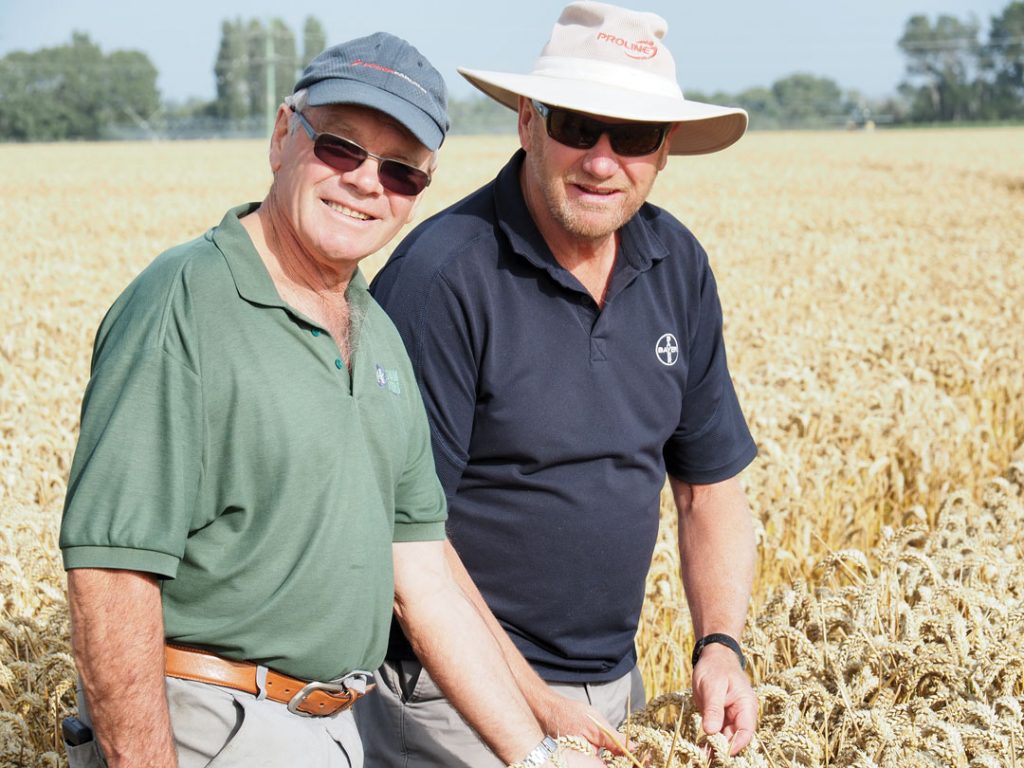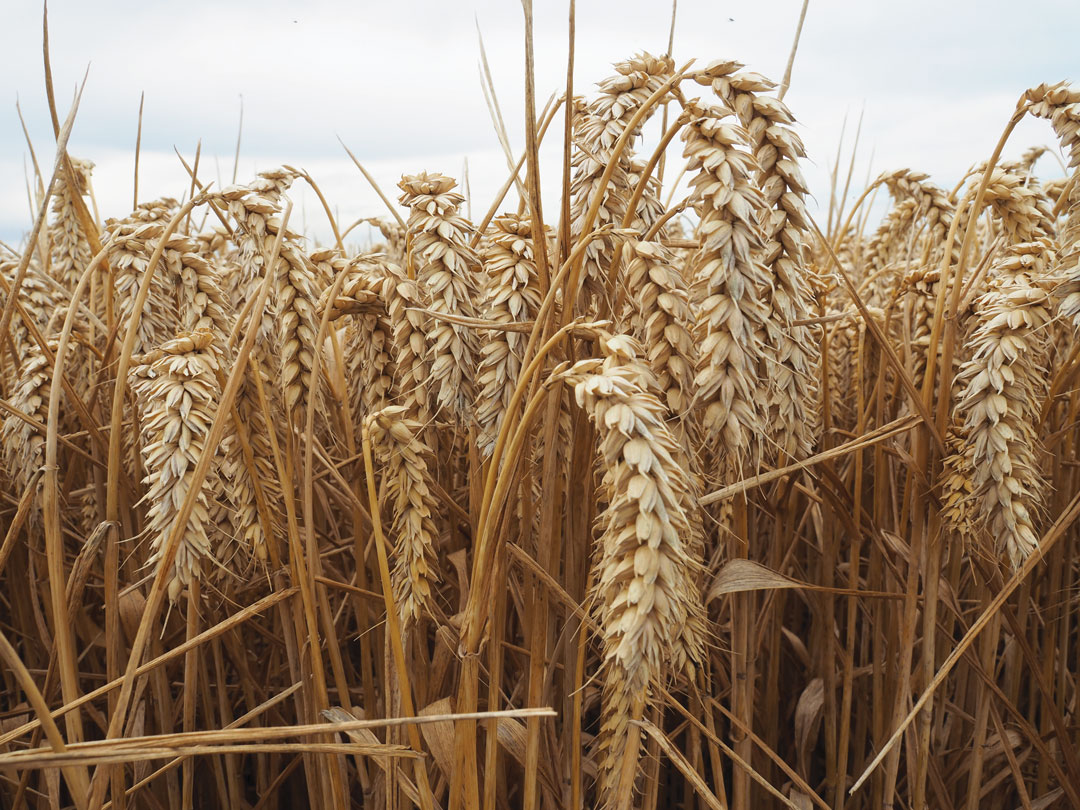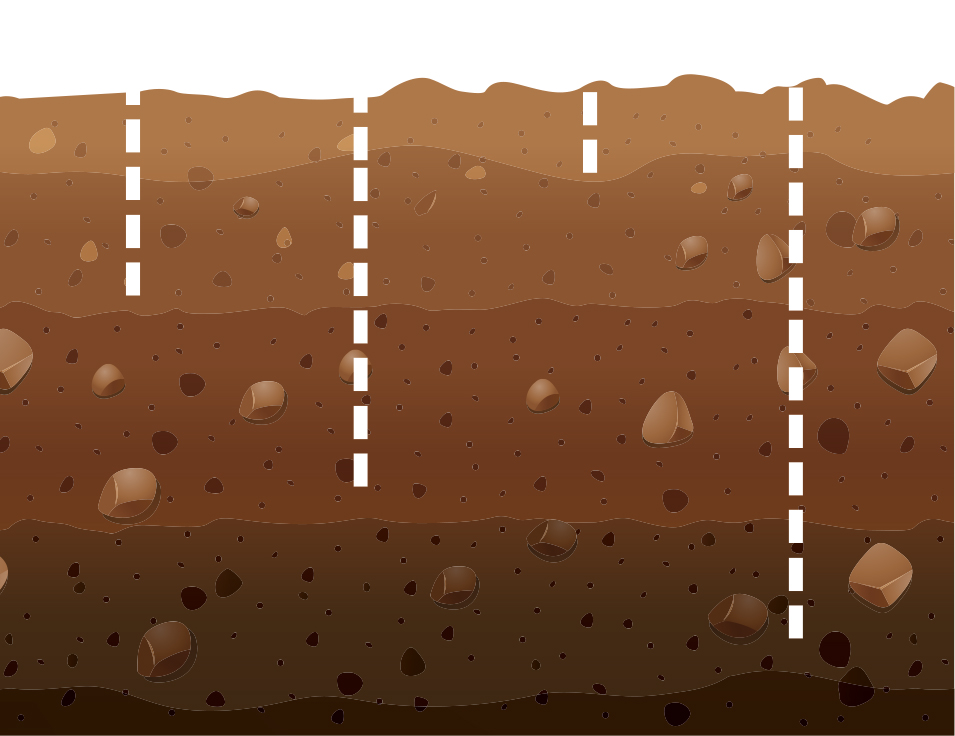THE YIELD GAP CHALLENGE
BY LEE HART • PHOTOS COURTESY OF BAYER CROPSCIENCE
In February 2020, Eric Watson of Ashburton, New Zealand, produced a new world record wheat yield. At an incredible 258.8 bu/ac, his 21-acre irrigated crop was grown in the country’s South Canterbury region where the average wheat yield is a respectable 178 bu/ac. It was his second such record yield confirmed by the Guinness World Records organization.
While the reproduction of such massive output on the Prairies is perhaps not a realistic goal, Watson’s repeat records illustrate the untapped yield potential in every kernel no matter where it is grown.

THE AGRONOMICS OF A RECORD CROP
Watson has farmed on the east coast of New Zealand’s South Island for more than 50 years and has a reputation as a perfectionist. He set out to beat his own previous record with assistance from David Weith, regional sales manager with Bayer CropScience as well as input from additional crop advisors.
For Watson, the challenge was to determine just how high his wheat yield could go. “The Guinness World Record is a nice recognition of our hard work and new innovations we’ve put in place,” said Watson. “We were pleased with what we accomplished in the 2017 record result, but we also saw where we could make improvements and achieve an even higher yield.”
At the start of the 10-month cropping season in April 2019, Watson sowed Kerrin, a feed wheat cultivar developed by KWS Seeds of Germany. He believes his use of all-liquid nitrogen and close monitoring of plant health helped achieve his 2020 results. “With our precision farming methods and using liquid nitrogen it helped to even out production over the paddock. We are pleased if we see yields increase year-on-year by 100 to 200 kilograms/ha [about four to seven bushels]. So, to beat my [2017] crop by almost 600 kg/ha [about nine bushels] exceeded even my hopes.”
To produce his record crop, Watson’s ambitious agronomic program included pre-emergence and in-crop weed control and fungicide treatments and eight separate nitrogen applications. The crop also received about 40 pounds of phosphorus, 89 pounds of potassium and 78 pounds of sulphur as well as six applications of Yara micronutrient products that included magnesium, manganese, zinc, copper and boron.
“The fixed costs are the same for a 15-tonne crop verses a 12-tonne crop,” said Weith, who has worked with Watson for many years. “On the Watson farm, all wheat fields are treated the same no matter the variety. The limiting factor is the soil type and field variability.”
Weith said there is probably no simple secret to yield optimization. Rather, it’s about the alignment of agronomic and management practices. With good soil as a starting point, these include appropriate variety choice, fertilizer regime, disease and insect management as well as plant density. More difficult to control, this broad formula extends to adequate moisture and good harvest conditions.
THE YIELD GAP IMPERATIVE
Wheat, wherever it’s grown, has greater yield potential than is now being realized. And the increase in wheat yield on any farm isn’t merely about bragging rights.
Brian Beres is an agronomy research scientist at the Agriculture and Agri-Food Canada (AAFC) Lethbridge Research and Development Centre. He believes gains will be made in wheat yield that will play a key role in feeding the world’s growing population over the next 30 years.
This is reflected in a 2019 study published by Beres and his United States Department of Agriculture counterpart Jerry Hatfield. It outlines the necessity of increased global wheat production. “Estimates show that production must increase by one billion metric tonnes to meet this demand,” the report states. “One method to meet future demand is to increase wheat yields by reducing the gap between actual and potential yields. Yield gap closure will require that local producers adopt practices that increase their climate resilience in wheat production systems.”
Research, for example, has determined dryland wheat production across the Prairies has the potential to produce a 70 bu/ac yield average, yet the actual average is closer to 54 bu/ac. A 16 bu/ac yield gap exists and this is where the work begins.
INTERNATIONAL STRATEGIES
Under the auspices of the AAFC, Beres is a participant in the Global Yield Gap and Water Productivity Atlas project (yieldgap.org), an ongoing international initiative based at the University of Nebraska–Lincoln. This work will determine the yield gap for 13 major crops across 73 countries, including Canada. It will also help to establish and promote practices that will close the gap.
“I really don’t know what the wheat yield potential is for Canada,” admitted Beres. The nation’s geographic location high in the northern hemisphere is a major limiting factor, he added. “We have a short growing season and it limits our yield potential.”
Beres hopes modelling to determine the wheat yield gap and, ultimately, yield potential, will be complete for the northern U.S. Plains and Canada by the end of 2021. While being in the northern hemisphere may limit wheat yield potential, he said an upside to climate change is modelling that indicates the Canadian Prairies may benefit from increased yields brought on by warmer temperatures.
Beres is also the Canadian principal lead of the Wheat Initiative, another ongoing global project of the G20 agricultural ministries. Created in 2011, it supports diverse wheat research projects. The initiative ties in nicely with the Global Yield Gap Atlas (GYGA). “Once we establish what the yield gaps are, we can survey growers about their agronomic and management practices to better understand what they are doing and what needs to improve to close the yield gap,” said Beres.
Certain factors that contribute to yield are beyond a farmer’s control, he said. For example, quality of soil and its ability to retain nutrients and make them available to plants is a major factor, as is the amount of available water and sunlight.
The size of the yield gap that defines yield potential obviously depends on where crops are grown, said Beres. He cited winter wheat as a good example. “If you’re growing winter wheat in France a yield of 5.8 tonnes per hectare [86 bu/ac] may be disappointing, but if you are growing that in Canada it might be a pretty good yield. So, it depends where you are.”
Beres believes a combination of improved plant genetics and proper agronomic practices will help raise the bar on yield. He said genetic improvements in plant structure such as increased root development could help improve nutrient-use efficiency. “Right now, it takes about two pounds of nitrogen to produce one pound of wheat,” he said. “If we can develop a larger root mass better able to scavenge around and find more nitrogen, increasing nutrient-use efficiency from 50 per cent to perhaps 75 per cent, there is potential to increase yield. And by increasing nutrient-use efficiency it can also help reduce environmental risks and concerns.”
Improved genetics can also play a role in the development of varieties that can be seeded earlier, he said. “We can plant the crop when the top couple inches of the soil reach 0C, and through improved genetics it is easier for the plant to sync with the environment.” Combine genetic improvements with agronomic practices and it is possible to break through the invisible ceiling of yield constraints, he said.

“I don’t think there is any one magic bullet, but through this yield gap process we can better understand why farmers aren’t achieving higher yields. And with that we can guide research in genetics and agronomic practices to push through that yield ceiling.”
The lead researcher on the GYGA is Patricio Grassini, University of Nebraska–Lincoln associate professor in the Department of Agronomy Horticulture. He believes understanding the yield gap will help farmers improve production efficiency as well as increase world food supply.
The Yield Gap project has determined yield potential for wheat across the central U.S. from Mexico north to the Canadian border. The potential wheat yield over that large geographic area is about 80 bu/ac. The actual average yield is about or 39 bu/ac, a gap of 41 bu/ac.
“It is a large area and obviously there is wide variability in wheat yield over that region, but it is a starting point,” said Grassini. “And the other important aspect is that it shows there is room for improvement.” Like Beres, he hopes computer modelling to be completed this year will determine Canada’s wheat yield potential.
The determination of yield potential is phase one, while phase two of the project involves the collection and analysis of farm data to determine what agronomic and management practices farmers employ. This will include information such as seeding dates and rates, crop fertility rates, weed and pest control practices and more.
“Farmers have collected a huge amount of data. If we can begin to analyze that it will give us some idea what needs to be changed or improved,” said Grassini. “And it may also show us where more research is needed to improve plant genetics or agronomic practices.”
The Yield Gap project began its work with soybeans, wheat and corn, but will potentially expand this selection to include canola, pulse crops and barley, said Grassini.
Sheri Strydhorst is an Alberta Wheat Commission agronomic research specialist who is studying the wheat yield gap primarily from a fertility standpoint. She said the goal is first to determine the theoretical yield potential of wheat and compare those numbers with real production averages.
“Using models and other techniques we need to define the theoretical yield potential, which isn’t easy,” said Styrdhorst. “The trick in optimizing yield is in managing the proper genetics for the environment you are in and applying proper agronomic practices.”
One research project has determined fertilization of wheat well above usual soil test recommendations will produce a yield increase. The question this raises is, does it make economic sense to do so?
“Often, if there is a yield shortfall, it is due to a nitrogen deficiency,” said Strydhorst. “My research has shown there is still a yield increase in wheat at a nitrogen rate of up to 200 pounds per acre. The yield is increasing but when does it stop being economical? When do we reach that point of diminishing return?”
Even if and when the wheat yield gap is calculated, many agronomic, management and environmental factors in combination can affect yield, she said. For example, targeting higher yields with higher fertility may also result in lodging while greater use of plant growth regulators can reduce it.
“And there are also socio-economic factors to consider,” she said. “Targeting higher yields means increased input costs and higher risk, so will farmers be able to get financing for operating loans? And again, with higher rates of fertility there could be increased environmental risks or concerns.”
Strydhorst said there is probably potential for Canadian farmers to produce 150 bu/ac wheat yields, but questioned the value in this ambitious target. “In Canada we also have to consider the trade off between yield and protein,” she said. “The higher the yield, the lower the protein.”
If Canada is to maintain its reputation as a producer of high-quality CWRS milling wheat, maximizing yield in this particular class may not be an option, said Strydhorst. In New Zealand, Western Canada and the U.S. Midwest, farmers and researchers alike have demonstrated wheat does have greater yield potential.
Considerable effort is being put into the measurement of the wheat yield gap, which will also reveal its yield potential. This will determine where we are and where we can be, but how do we get there, and is it worth the effort?







Comments